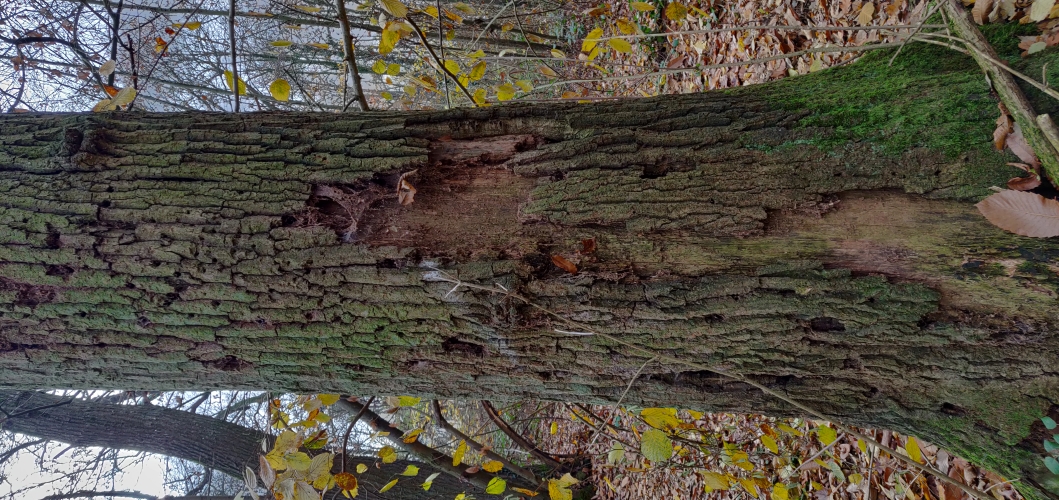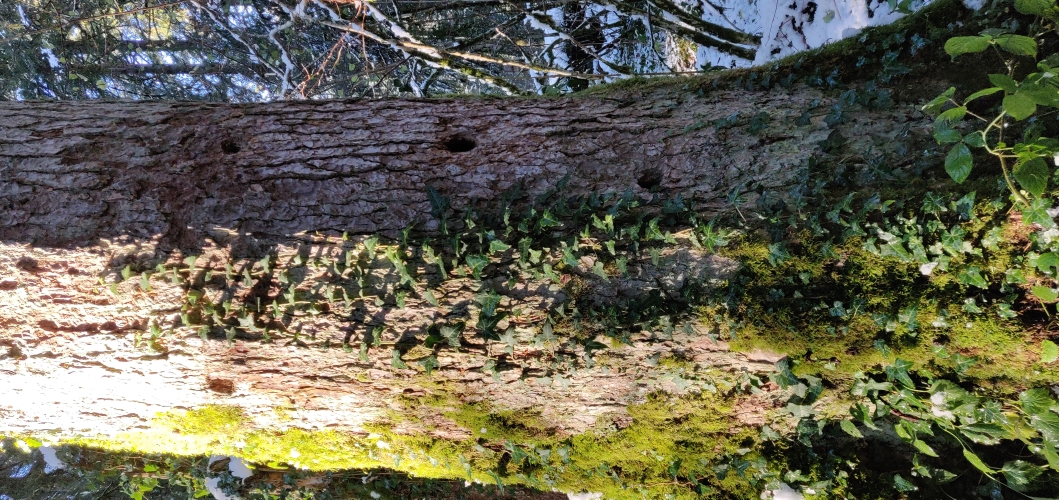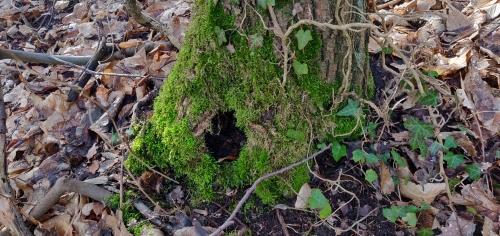Biodiversty in forest : habitat trees
Biodiversity is part of ecosystem functioning. It is largely stimulated by the micro-habitats, which are real little living environments sheltered by the trees. The micro-habitats are havens very varied depending of the morphology of the trees.
Those very specific habitats and of various sizes, are essentiel for the wildlife living in the forest. It has been catégorized to identify et favour it better. Here are some of the micro-habitats which can be found in the trees.
Detachment of bark and splits on trees trunks
The bark of old trees, or even young trees holding damages, may sometimes fail of the trunk, thereby forming a very interesting haven for bats of creepers, little forest birds very suitable to life on trunks. Other species, like bugs, some tree spiders, mites and arthropods appreciate hiding in empty cavitys formed by splits in the wood.

Habitat formed by ivy
We don't always know, but ivy, far from being an inconvenience for trees, constitutee a real haven and a source of food for wildlife. Indeed, ivy flowers at autumn and offer its fruits at the end of the winter, when most of the vegetation offers little feeding ressources during this transition period. Here we find butterflies (Moths) or birds, such as blackbird or Cute wren.
woodpecker cavity
Those cavities on trunk trees are made by Woodpeckers, often in trees weakened by fungus. For those birds, those habitats they created itselves will be used as treeholes nest sites or treeholes for alimentation, drilled to capture insects.
Thise cavities may be used for a convenient habitat or a source of food for other species : various cavicolous birds (tits, owls …), bats, dormouse, spiders or wasps... So those cavities are very interesting for secondary occupants, but the competition is fierce and places are et les places are expensive in forest !

Dead wood on branches
Here we have another exemple of micro-habitat : the dead branches on the upper part of the tree, the houppier. There the dead wood is different from that located on the soil, and often displays specific cavities. They carry sometimes polypore fungus, forming « hats » on the wood, coming to degrade it and favour the biodiversity, with the procession of associated species. On those dead woods, we find lots of beetls, diptera, some bees and wasps.
There are many other types of micro-habitats and those living environments are essential to a large number of forest species, especially those who realize e big part of their life cycle in the wood. En forêt, it is possible to identify those trees for its preservation and make persist those locations for food and habitat for biodiversity !

